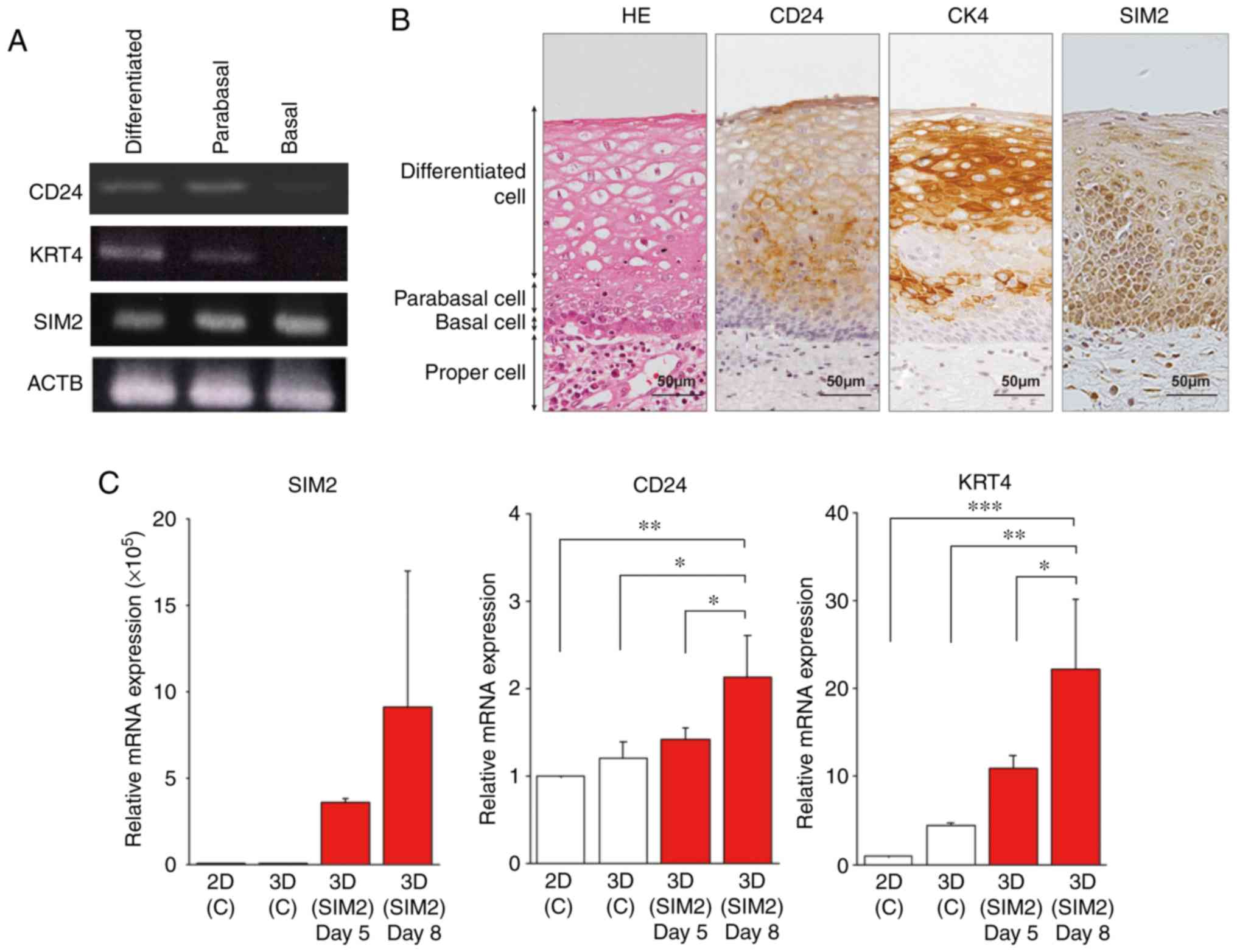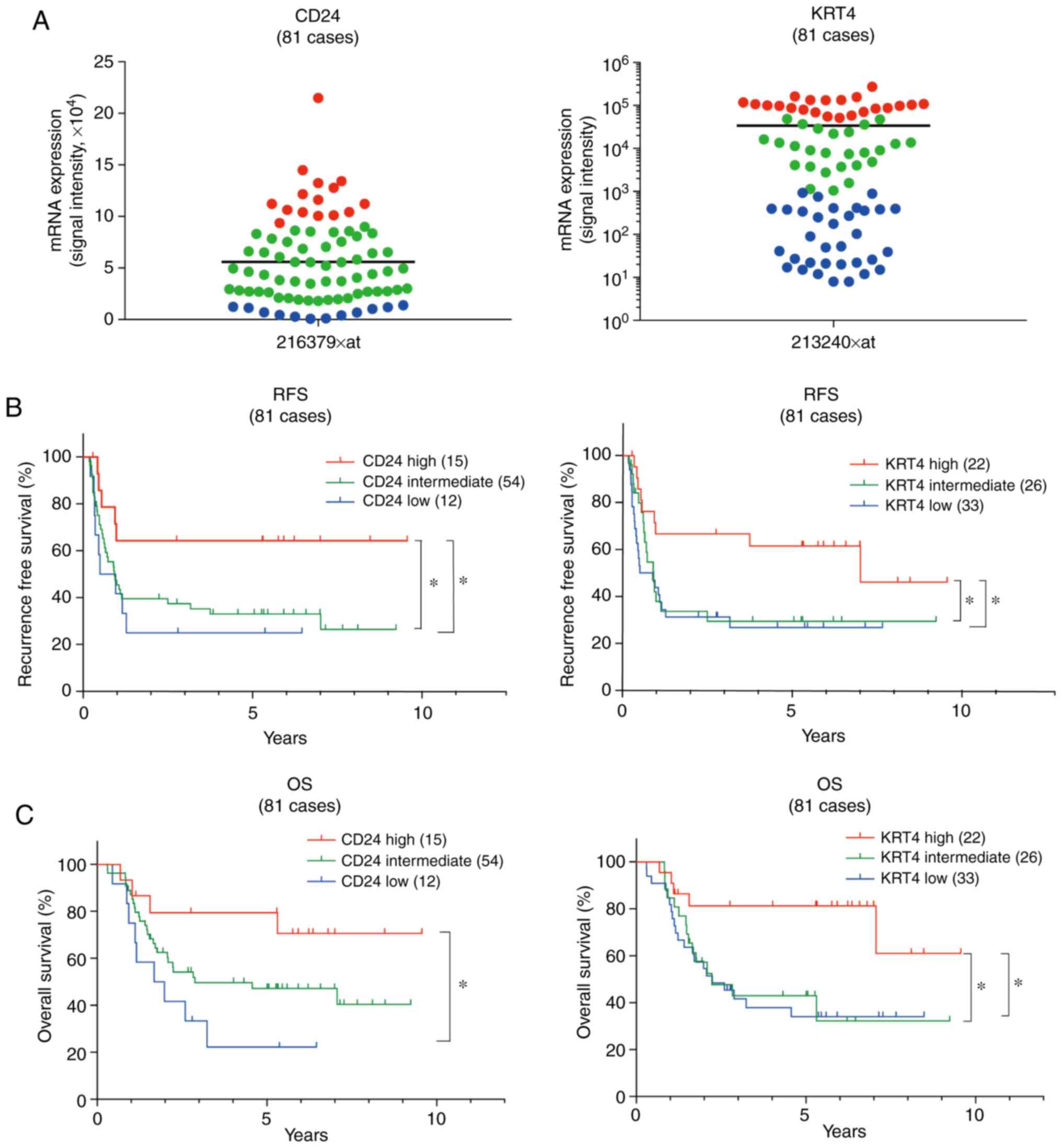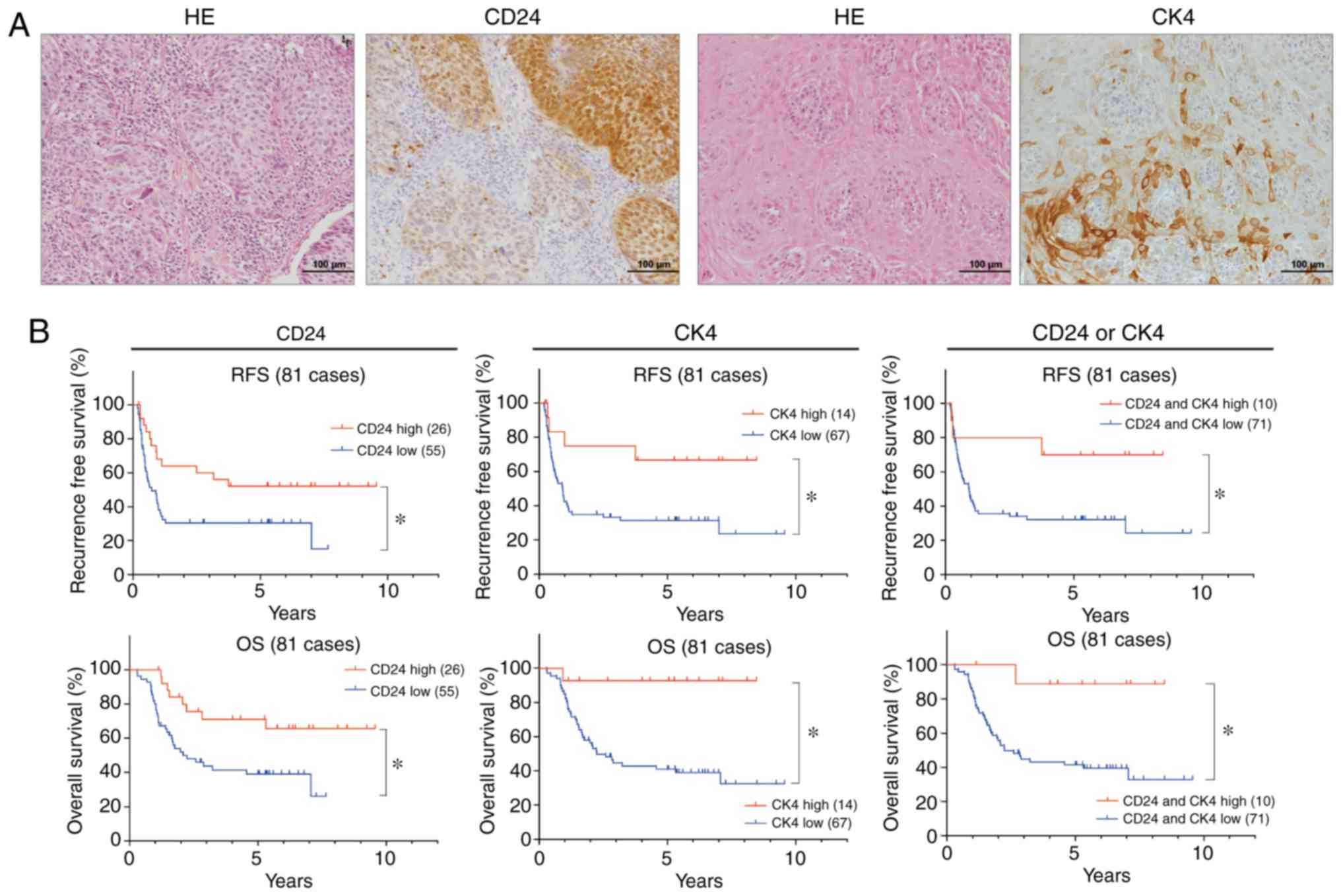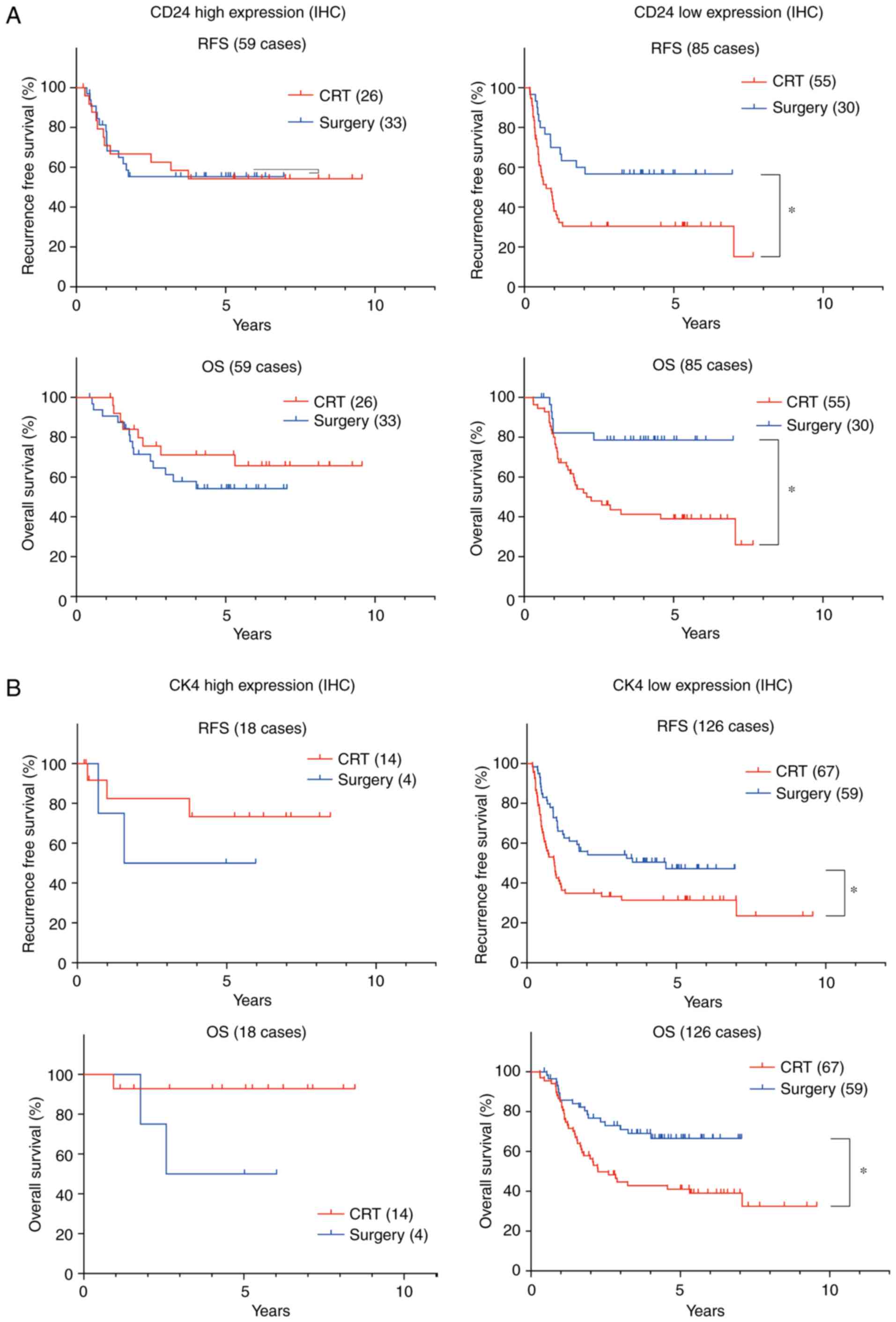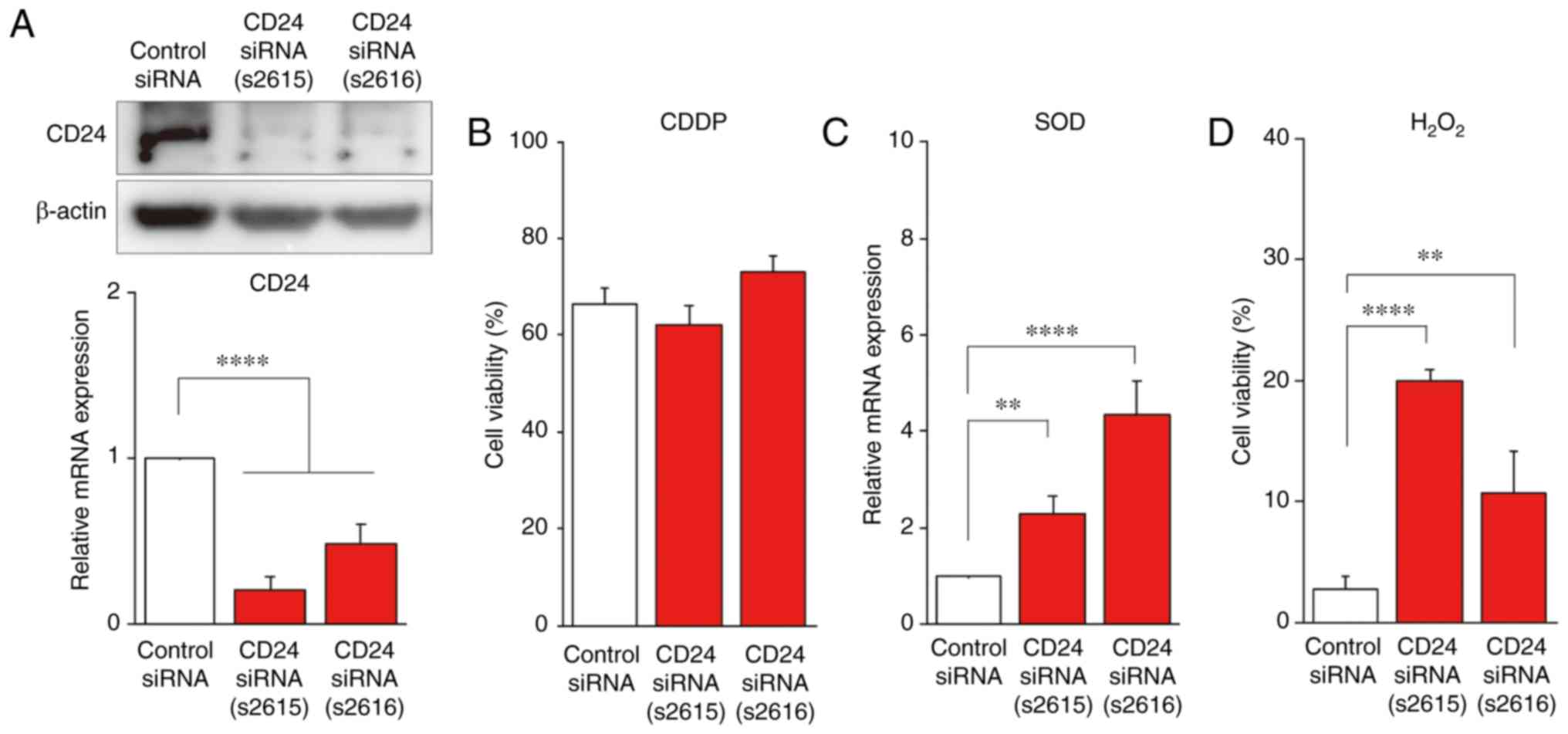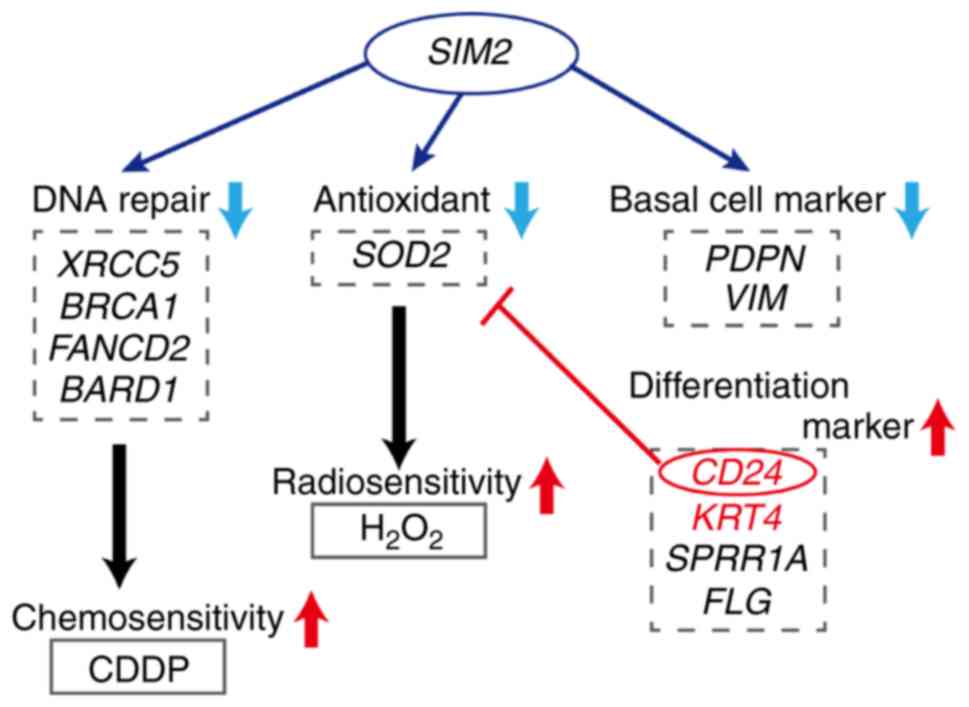|
1
|
Jemal A, Bray F, Center MM, Ferlay J, Ward
E and Forman D: Global cancer statistics. CA Cancer J Clin.
61:69–90. 2011. View Article : Google Scholar : PubMed/NCBI
|
|
2
|
Kato K, Muro K, Minashi K, Ohtsu A,
Ishikura S, Boku N, Takiuchi H, Komatsu Y, Miyata Y and Fukuda H;
Gastrointestinal Oncology Study Group of the Japan Clinical
Oncology Group (JCOG): Phase II study of chemoradiotherapy with
5-fluorouracil and cisplatin for stage II-III esophageal squamous
cell carcinoma: JCOG trial (JCOG 9906). Int J Radiat Oncol Biol
Phys. 81:684–690. 2011. View Article : Google Scholar
|
|
3
|
Ando N, Kato H, Igaki H, Shinoda M, Ozawa
S, Shimizu H, Nakamura T, Yabusaki H, Aoyama N, Kurita A, et al: A
randomized trial comparing postoperative adjuvant chemotherapy with
cisplatin and 5-fluorouracil versus preoperative chemotherapy for
localized advanced squamous cell carcinoma of the thoracic
esophagus (JCOG9907). Ann Surg Oncol. 19:68–74. 2012. View Article : Google Scholar
|
|
4
|
Tanaka Y, Aoyagi K, Minashi K, Komatsuzaki
R, Komatsu M, Chiwaki F, Tamaoki M, Nishimura T, Takahashi N, Oda
I, et al: Discovery of a good responder subtype of esophageal
squamous cell carcinoma with cytotoxic T-lymphocyte signatures
activated by chemoradiotherapy. PLoS One. 10:e01438042015.
View Article : Google Scholar : PubMed/NCBI
|
|
5
|
Arthur JF and Fenner ML: The influence of
histological grading on prognosis in carcinoma of the tongue (a
computer analysis of 299 cases). Clin Radiol. 17:384–396. 1966.
View Article : Google Scholar : PubMed/NCBI
|
|
6
|
Rowe DE, Carroll RJ and Day CL Jr:
Prognostic factors for local recurrence, metastasis, and survival
rates in squamous cell carcinoma of the skin, ear, and lip.
Implications for treatment modality selection. J Am Acad Dermatol.
26:976–990. 1992. View Article : Google Scholar : PubMed/NCBI
|
|
7
|
Bersten DC, Sullivan AE, Peet DJ and
Whitelaw ML: bHLH-PAS proteins in cancer. Nat Rev Cancer.
13:827–841. 2013. View Article : Google Scholar : PubMed/NCBI
|
|
8
|
Chen H, Chrast R, Rossier C, Gos A,
Antonarakis SE, Kudoh J, Yamaki A, Shindoh N, Maeda H, Minoshima S,
et al: Single-minded and Down syndrome? Nat Genet. 10:9–10. 1995.
View Article : Google Scholar : PubMed/NCBI
|
|
9
|
Dahmane N, Charron G, Lopes C, Yaspo ML,
Maunoury C, Decorte L, Sinet PM, Bloch B and Delabar JM: Down
syndrome-critical region contains a gene homologous to Drosophila
sim expressed during rat and human central nervous system
development. Proc Natl Acad Sci USA. 92:9191–9195. 1995. View Article : Google Scholar : PubMed/NCBI
|
|
10
|
Swanson HI, Chan WK and Bradfield CA: DNA
binding specificities and pairing rules of the Ah receptor, ARNT,
and SIM proteins. J Biol Chem. 270:26292–26302. 1995. View Article : Google Scholar : PubMed/NCBI
|
|
11
|
DeYoung MP, Tress M and Narayanan R:
Identification of Down's syndrome critical locus gene SIM2-s as a
drug therapy target for solid tumors. Proc Natl Acad Sci USA.
100:4760–4765. 2003. View Article : Google Scholar : PubMed/NCBI
|
|
12
|
Nakamura K, Komatsu M, Chiwaki F, Takeda
T, Kobayashi Y, Banno K, Aoki D, Yoshida T and Sasaki H: SIM2l
attenuates resistance to hypoxia and tumor growth by
transcriptional suppression of HIF1A in uterine cervical squamous
cell carcinoma. Sci Rep. 7:145742017. View Article : Google Scholar : PubMed/NCBI
|
|
13
|
Tamaoki M, Komatsuzaki R, Komatsu M,
Minashi K, Aoyagi K, Nishimura T, Chiwaki F, Hiroki T, Daiko H,
Morishita K, et al: Multiple roles of single-minded 2 in esophageal
squamous cell carcinoma and its clinical implications. Cancer Sci.
109:1121–1134. 2018. View Article : Google Scholar : PubMed/NCBI
|
|
14
|
Kay R, Rosten PM and Humphries RK: CD24, a
signal transducer modulating B cell activation responses, is a very
short peptide with a glycosyl phosphatidylinositol membrane anchor.
J Immunol. 147:1412–1416. 1991.PubMed/NCBI
|
|
15
|
Deng J, Gao G, Wang L, Wang T, Yu J and
Zhao Z: CD24 expression as a marker for predicting clinical outcome
in human gliomas. J Biomed Biotechnol. 2012:5171722012. View Article : Google Scholar : PubMed/NCBI
|
|
16
|
Su N, Peng L, Xia B, Zhao Y, Xu A, Wang J,
Wang X and Jiang B: Lyn is involved in CD24-induced ERK1/2
activation in colorectal cancer. Mol Cancer. 11:432012. View Article : Google Scholar : PubMed/NCBI
|
|
17
|
Liu C, Zheng S, Shen H, Xu K, Chen J, Li
H, Xu Y, Xu A, Chen B, Kaku H, et al: Clinical significance of CD24
as a predictor of bladder cancer recurrence. Oncol Lett. 6:96–100.
2013. View Article : Google Scholar : PubMed/NCBI
|
|
18
|
Tanaka T, Terai Y, Kogata Y, Ashihara K,
Maeda K, Fujiwara S, Yoo S, Tanaka Y, Tsunetoh S, Sasaki H, et al:
CD24 expression as a marker for predicting clinical outcome and
invasive activity in uterine cervical cancer. Oncol Rep.
34:2282–2288. 2015. View Article : Google Scholar : PubMed/NCBI
|
|
19
|
Baumann P, Cremers N, Kroese F, Orend G,
Chiquet-Ehrismann R, Uede T, Yagita H and Sleeman JP: CD24
expression causes the acquisition of multiple cellular properties
associated with tumor growth and metastasis. Cancer Res.
65:10783–10793. 2005. View Article : Google Scholar : PubMed/NCBI
|
|
20
|
Schabath H, Runz S, Joumaa S and Altevogt
P: CD24 affects CXCR4 function in pre-B lymphocytes and breast
carcinoma cells. J Cell Sci. 119:314–325. 2006. View Article : Google Scholar : PubMed/NCBI
|
|
21
|
Vazquez-Martin A, Oliveras-Ferraros C,
Cufí S, Del Barco S, Martin-Castillo B, Lopez-Bonet E and Menendez
JA: The anti-diabetic drug metformin suppresses the
metastasis-associated protein CD24 in MDA-MB-468 triple-negative
breast cancer cells. Oncol Rep. 25:135–140. 2011.
|
|
22
|
Takahashi M, Nakajima M, Ogata H, Domeki
Y, Ohtsuka K, Ihara K, Kurayama E, Yamaguchi S, Sasaki K, Miyachi K
and Kato H: CD24 expression is associated with progression of
gastric cancer. Hepatogastroenterology. 60:653–658. 2013.
|
|
23
|
Overdevest JB, Thomas S, Kristiansen G,
Hansel DE, Smith SC and Theodorescu D: CD24 offers a therapeutic
target for control of bladder cancer metastasis based on a
requirement for lung colonization. Cancer Res. 71:3802–3811. 2011.
View Article : Google Scholar : PubMed/NCBI
|
|
24
|
Thomas S, Harding MA, Smith SC, Overdevest
JB, Nitz MD, Frierson HF, Tomlins SA, Kristiansen G and Theodorescu
D: CD24 is an effector of HIF-1-driven primary tumor growth and
metastasis. Cancer Res. 72:5600–5612. 2012. View Article : Google Scholar : PubMed/NCBI
|
|
25
|
Li C, Heidt DG, Dalerba P, Burant CF,
Zhang L, Adsay V, Wicha M, Clarke MF and Simeone DM: Identification
of pancreatic cancer stem cells. Cancer Res. 67:1030–1037. 2007.
View Article : Google Scholar : PubMed/NCBI
|
|
26
|
Gao MQ, Choi YP, Kang S, Youn JH and Cho
NH: CD24+ cells from hierarchically organized ovarian cancer are
enriched in cancer stem cells. Oncogene. 29:2672–2680. 2010.
View Article : Google Scholar : PubMed/NCBI
|
|
27
|
Sakamoto K, Aragaki T, Morita K, Kawachi
H, Kayamori K, Nakanishi S, Omura K, Miki Y, Okada N, Katsube K, et
al: Down-regulation of keratin 4 and keratin 13 expression in oral
squamous cell carcinoma and epithelial dysplasia: A clue for
histopathogenesis. Histopathology. 58:531–542. 2011. View Article : Google Scholar : PubMed/NCBI
|
|
28
|
Chung JY, Braunschweig T, Hu N, Roth M,
Traicoff JL, Wang QH, Knezevic V, Taylor PR and Hewitt SM: A
multiplex tissue immunoblotting assay for proteomic profiling: A
pilot study of the normal to tumor transition of esophageal
squamous cell carcinoma. Cancer Epidemiol Biomarkers Prev.
15:1403–1408. 2006. View Article : Google Scholar : PubMed/NCBI
|
|
29
|
Schaaij-Visser TB, Graveland AP, Gauci S,
Braakhuis BJ, Buijze M, Heck AJ, Kuik DJ, Bloemena E, Leemans CR,
Slijper M and Brakenhoff RH: Differential proteomics identifies
protein biomarkers that predict local relapse of head and neck
squamous cell carcinomas. Clin Cancer Res. 15:7666–7675. 2009.
View Article : Google Scholar : PubMed/NCBI
|
|
30
|
Oken MM, Creech RH, Tormey DC, Horton J,
Davis TE, McFadden ET and Carbone PP: Toxicity and response
criteria of the eastern cooperative oncology group. Am J Clin
Oncol. 5:649–655. 1982. View Article : Google Scholar : PubMed/NCBI
|
|
31
|
Sobin LH and Wittekind C: TNM
classification of malignant tumors. 6th edition. Wiley-Liss; New
York, NY: 2002
|
|
32
|
Livak KJ and Schmittgen TD: Analysis of
relative gene expression data using real-time quantitative PCR and
the 2(-Delta Delta C(T)) method. Methods. 25:402–408. 2001.
View Article : Google Scholar
|
|
33
|
Ashida A, Boku N, Aoyagi K, Sato H,
Tsubosa Y, Minashi K, Muto M, Ohtsu A, Ochiai A, Yoshida T, et al:
Expression profiling of esophageal squamous cell carcinoma patients
treated with definitive chemoradiotherapy: Clinical implications.
Int J Oncol. 28:1345–1353. 2006.PubMed/NCBI
|
|
34
|
Okabe H, Aoki K, Yogosawa S, Saito M,
Marumo K and Yoshida K: Downregulation of CD24 suppresses bone
metastasis of lung cancer. Cancer Sci. 109:112–120. 2018.
View Article : Google Scholar :
|
|
35
|
Nakamura K, Terai Y, Tanabe A, Ono YJ,
Hayashi M, Maeda K, Fujiwara S, Ashihara K, Nakamura M, Tanaka Y,
et al: CD24 expression is a marker for predicting clinical outcome
and regulates the epithelial-mesenchymal transition in ovarian
cancer via both the Akt and ERK pathways. Oncol Rep. 37:3189–3200.
2017. View Article : Google Scholar : PubMed/NCBI
|
|
36
|
Moon YW, An HJ, Koo JS, Kim GM, Han H,
Park S, Kim SI, Park HS, Kim S, Kim SK, et al: CD44/CD24 and
aldehyde dehydrogenase 1 in estrogen receptor-positive early breast
cancer treated with tamoxifen: CD24 positivity is a poor
prognosticator. Oncotarget. 9:2622–2630. 2017.
|
|
37
|
Rahadiani N, Ikeda J, Makino T, Tian T,
Qiu Y, Mamat S, Wang Y, Doki Y, Aozasa K and Morii E: Tumorigenic
role of podoplanin in esophageal squamous-cell carcinoma. Ann Surg
Oncol. 17:1311–1323. 2010. View Article : Google Scholar : PubMed/NCBI
|
|
38
|
Zelko IN, Mariani TJ and Folz RJ:
Superoxide dismutase multi-gene family: A comparison of the
CuZn-SOD (SOD1), Mn-SOD (SOD2), and EC-SOD (SOD3) gene structures,
evolution, and expression. Free Radic Biol Med. 33:337–349. 2002.
View Article : Google Scholar : PubMed/NCBI
|
|
39
|
Taylor MA, Parvani JG and Schiemann WP:
The pathophysiology of epithelial-mesenchymal transition induced by
transforming growth factor-beta in normal and malignant mammary
epithelial cells. J Mammary Gland Biol Neoplasia. 15:169–190. 2010.
View Article : Google Scholar : PubMed/NCBI
|
|
40
|
Zavadil J and Böttinger EP: TGF-beta and
epithelial-to-mesenchymal transitions. Oncogene. 24:5764–5774.
2005. View Article : Google Scholar : PubMed/NCBI
|
|
41
|
Lee YH, Albig AR, Regner M, Schiemann BJ
and Schiemann WP: Fibulin-5 initiates epithelial-mesenchymal
transition (EMT) and enhances EMT induced by TGF-beta in mammary
epithelial cells via a MMP-dependent mechanism. Carcinogenesis.
29:2243–2251. 2008. View Article : Google Scholar : PubMed/NCBI
|















